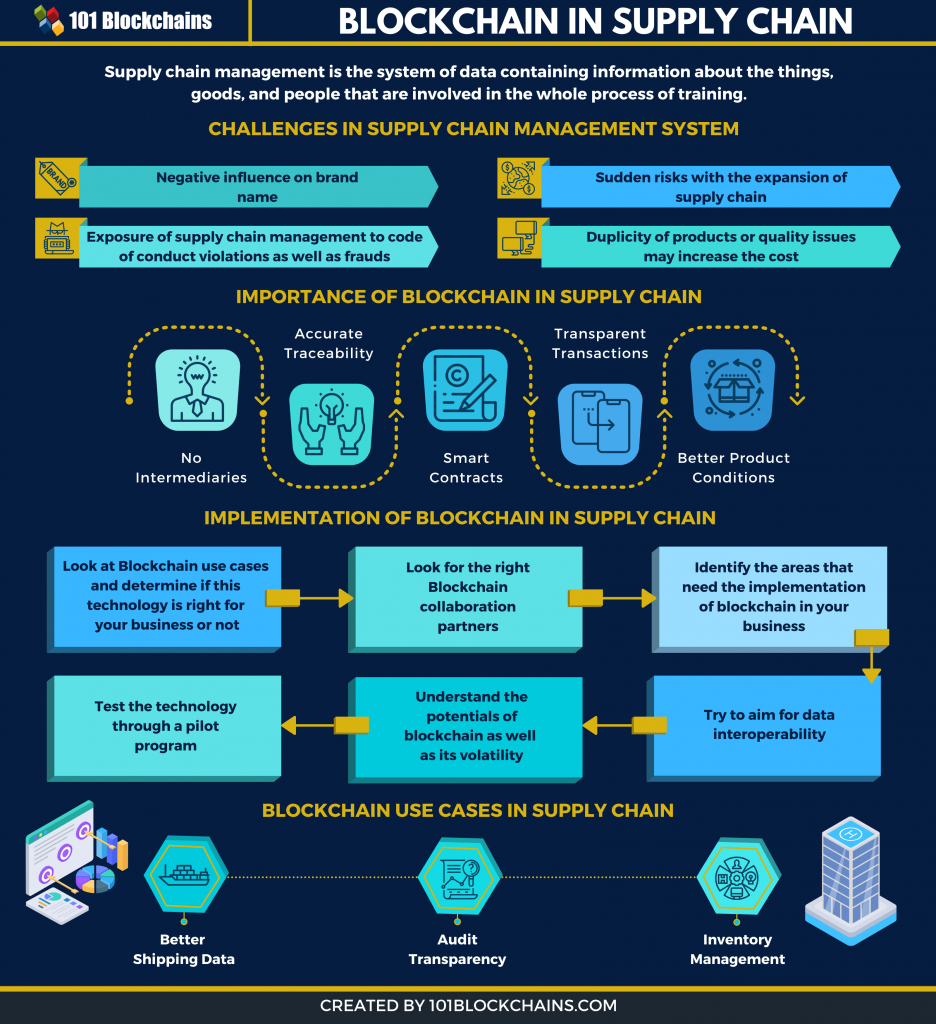Digitizing The Supply Chain: How Blockchain Is Revolutionizing The Future Of Commerce
Digitizing the Supply Chain: How Blockchain is Revolutionizing the Future of Commerce

- The Future Of Real Estate: How Tokenized Assets Are Revolutionizing The Industry
- What Are Smart Contracts And How Will They Revolutionize Business
- Welcome To The World Of DeFi: Your Step-by-Step Guide To Unlocking Its Potential
- Minting Your Masterpiece: Exploring The Best NFT Platforms For Creators
- Tokenized Commodities: A Game-Changer For Crypto Markets?
The supply chain is the backbone of modern commerce, connecting manufacturers, suppliers, and customers across the globe. However, traditional supply chains have always been plagued by inefficiencies, lack of transparency, and a high risk of error. With the advent of blockchain technology, the supply chain is on the cusp of a revolution. In this article, we’ll explore the role of blockchain in supply chain digitization and how it’s changing the game.
The Challenges of Traditional Supply Chains
Traditional supply chains are complex networks of relationships, involving multiple stakeholders, from suppliers to manufacturers, distributors, and retailers. However, these relationships are often fragmented, with each party having its own systems, processes, and data. This lack of coordination and visibility leads to inefficiencies, including:
- Lack of transparency: It’s difficult to track the origin, movement, and ownership of goods, making it hard to identify potential issues or errors.
- High risk of counterfeiting: Without a centralized system, it’s easy for fake or tampered products to enter the supply chain.
- Inefficient inventory management: Stakeholders often hold excess inventory, leading to waste, overstocking, and stockouts.
- Lengthy settlement processes: Payment and settlement processes are often slow, time-consuming, and vulnerable to disputes.
The Blockchain Solution
Blockchain technology, with its transparent, immutable, and decentralized characteristics, is perfectly suited to address the challenges of traditional supply chains. By creating a shared, digital ledger, blockchain enables all stakeholders to access and manage data in real-time, reducing the risk of errors, improving efficiency, and increasing transparency.
Key Benefits of Blockchain in Supply Chain Digitization
- Enhanced transparency: Blockchain provides a single, shared view of the supply chain, allowing stakeholders to track the origin, movement, and ownership of goods in real-time.
- Increased security: Blockchain’s decentralized nature and use of cryptography ensure that data is secure and tamper-proof.
- Improved inventory management: With real-time data, stakeholders can optimize inventory levels, reducing waste and stockouts.
- Faster settlement processes: Blockchain enables instant payment and settlement, reducing the time and complexity of traditional settlement processes.
- Reduced counterfeiting: Blockchain’s ability to track and verify the authenticity of products makes it difficult for counterfeit goods to enter the supply chain.
Real-World Examples
Several companies are already leveraging blockchain to digitize their supply chains. For example:
- Maersk and IBM: The two companies partnered to create a blockchain-based platform for tracking shipping containers, reducing transit times and increasing efficiency.
- Walmart: The retail giant uses blockchain to track the origin and movement of its produce, improving food safety and reducing the risk of contamination.
- De Beers: The diamond mining company uses blockchain to track the origin and provenance of its diamonds, ensuring their authenticity and purity.
The Future of Supply Chain Digitization
The use of blockchain in supply chain digitization is still in its early stages, but the potential is vast. As the technology continues to evolve, we can expect to see:
